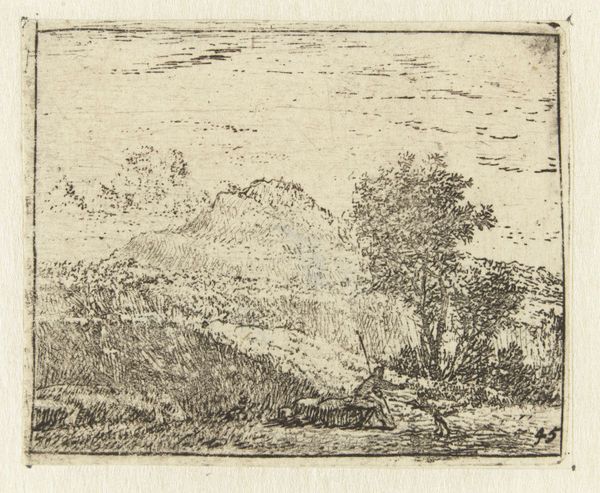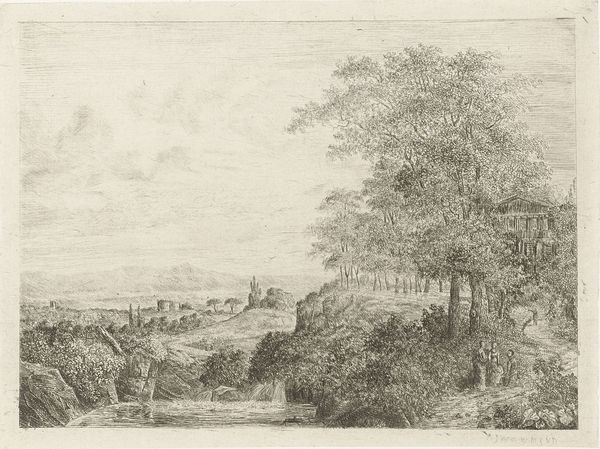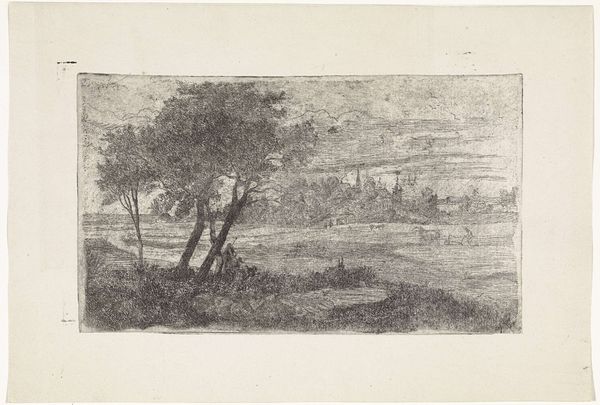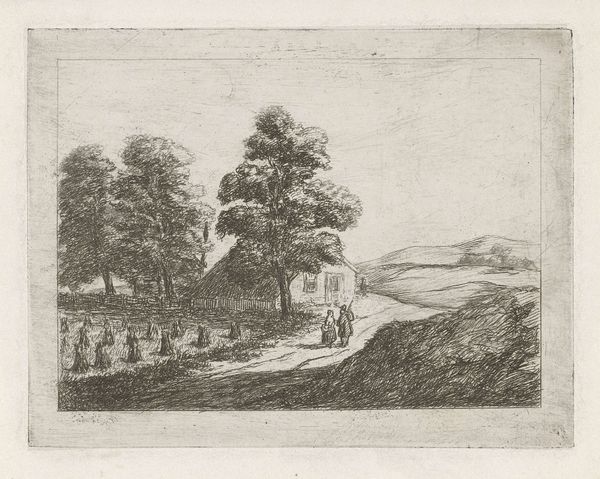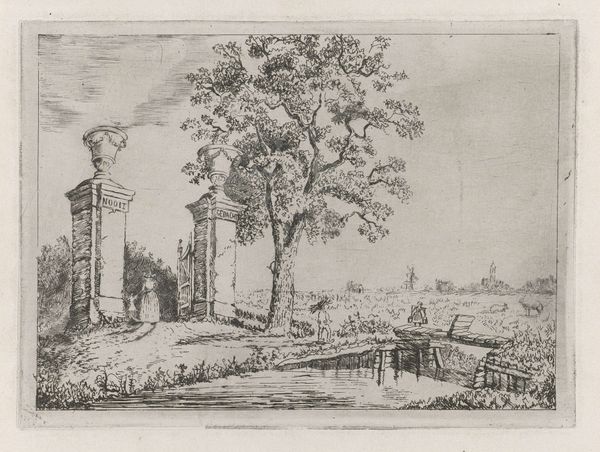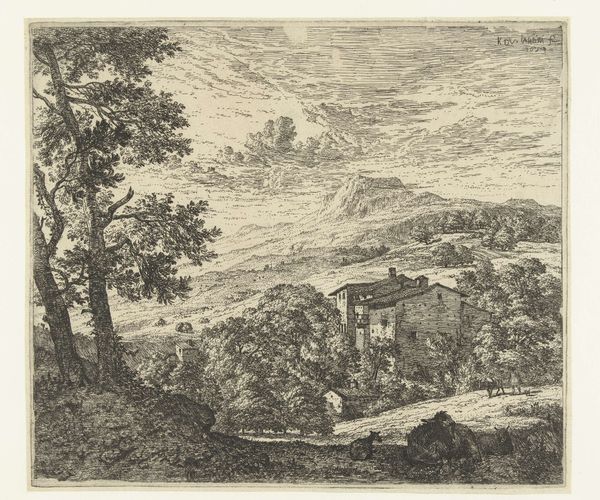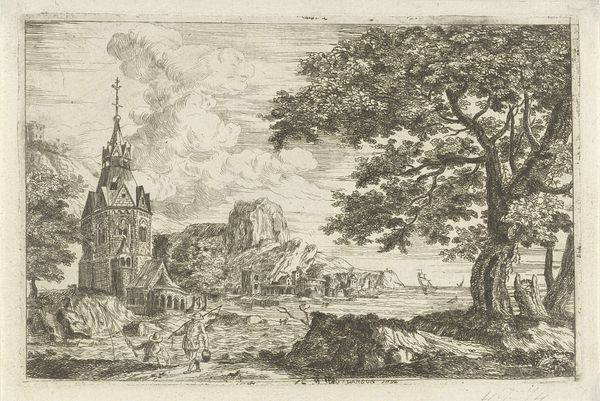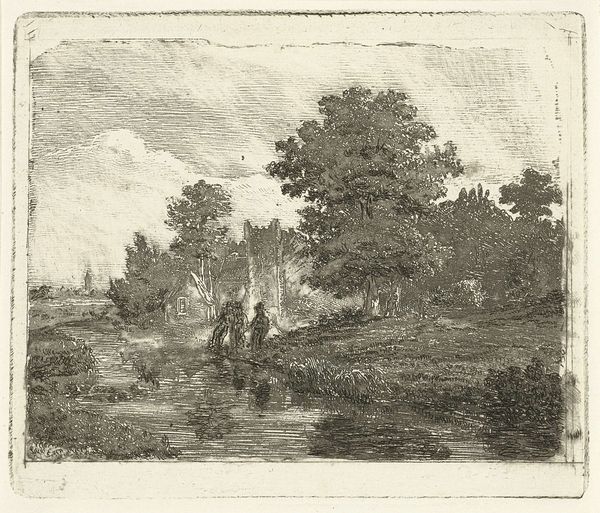
Dimensions: height 90 mm, width 107 mm
Copyright: Rijks Museum: Open Domain
Editor: So, this is *Rustend groepje wandelaars met balspelende kinderen*, created sometime between 1823 and 1883 by Johannes Adrianus van der Drift, made using pen and drawing. It's quite busy and the figures feel a bit crowded within the frame. I'm wondering, what stands out to you most when you look at this piece? Curator: The way this sketch captures a leisure scene is really fascinating. It speaks volumes about the social dynamics of the time, doesn’t it? We see this group – likely middle-class, given their clothing – taking their ease. Do you notice how distinct it is in style compared to depictions of labor? Editor: I do see that contrast. They’re clearly not toiling, and there's an almost idealized vision of carefree children. But what’s with the guy in the tree? Curator: Ah, that’s an interesting point! He certainly disrupts the calm. His presence introduces an element of playful chaos. It might reflect a specific game, a local custom. Beyond that, it could subtly critique the idealized leisure, introducing an unpredictable element of disruption, wouldn’t you agree? Think of how Romanticism often juxtaposed the sublime with everyday life. Editor: I hadn’t considered that juxtaposition! It almost feels like he’s about to fall and shatter the peaceful scene. The way the figures blend into the landscape also makes it a compelling window into a specific cultural perspective. Curator: Precisely! This work allows us to look back and interpret it as part of the rising popularity of Romantic landscape art, intended for an increasingly accessible art market. This gives an indication of how artworks of its kind might function and reflect a public role of art for middle-class sensibilities in those times. What I'll keep with me is the way that such a simple sketch can still provoke complex discussion about the viewer's socio-political relationship with an image and the public role it inhabits. Editor: I totally agree. Looking at the artwork through your approach, considering cultural contexts, allows to interpret the narrative and deepen my understanding about art itself.
Comments
No comments
Be the first to comment and join the conversation on the ultimate creative platform.

